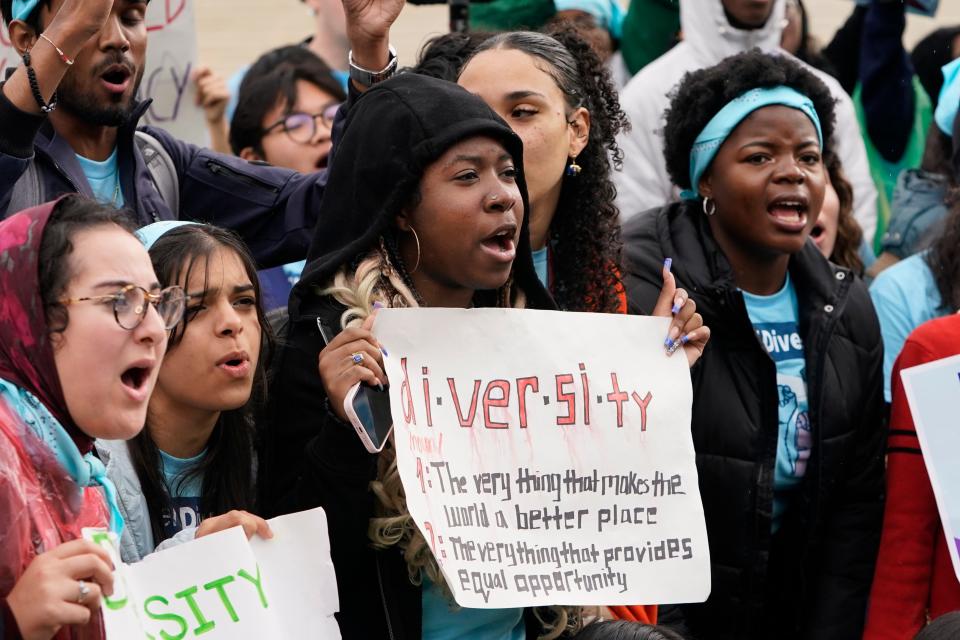After affirmative action: A new way to look at college admissions
The original goal of affirmative action was to increase the number of Black students in four-year colleges and universities. The creators of the program believed this would eventually lead to greater economic prosperity in the Black community and greater diversity at all levels of society throughout the United States. The good news: The program has been very successful over the years. The bad news: People do not realize that because of past racial discrimination, there is still not a statistically proportionate representation of Black people in the most successful sectors of American society.
A study released this month by researchers from Harvard and Brown universities concluded that affluent students collectively place much higher on admissions rubrics when it comes to SAT/ACT scores and a category often referred to as “non-academic ratings,” including factors like extracurriculars, athletics and other enrichment activities. It makes sense: Students who live in an economically strong two-parent household have the money to pay for extensive academic tutoring and a top SAT/ACT prep course, as well as the ability to take the test multiple times for a higher score. Similarly, these students benefit from application-boosting amenities like elite athletics coaching and opportunities to travel abroad.
No matter how you cut it, the reality is that affluent students have a competitive advantage in college admissions — even when race is removed from the equation. An extremely bright student from an economically challenged household may have a strong GPA but may not have the resources or support to achieve a high SAT/ACT score. In addition, they may have to work part time, making it even more difficult to participate in the sports, extracurriculars or community service activities that can make a college application stand out.

After graduation, the gap grows quickly. Alumni of highly selective colleges have a better chance of earning in the top 1% in annual income, attending an elite graduate school and working at a prestigious firm, the study concluded. Past research also demonstrated that people with a college degree earn a million dollars more than those who don’t.
In light of these facts, it’s crystal-clear that the best way to level the playing field and close the opportunity gap is for college admissions to place stronger consideration on every applicant’s life circumstances. Most educational institutions are genuine in their commitment to creating a diverse freshman class that will help students develop intercultural competence and learn from classmates who come from very different life circumstances. They do a good job of reviewing a student’s GPA, test scores and special skills. Yet few take a deep dive into the life situations that can make or break a college application.
More perspective: Affirmative action is gone. Higher education access remains a fact in the U.S. Here's why
With the Supreme Court’s ruling on affirmative action, it’s more important than ever that we all do better. At Centenary University in Hackettstown, where I assumed the presidency on July 1, we’re developing a new way to evaluate admissions applications that I call Life Circumstances Admission. This innovative concept allows admissions officers to consider the unique life experiences of applicants of all races and backgrounds and, at the same time, account for the generational experiences of African Americans in the United States. In college admissions, business and life success, the young person who has emotional resilience — often called grit — will be the better student and add more value to the lives of classmates and society.
There is no perfect formula to determine which candidate’s life circumstances make them a better applicant. However, experienced admissions officers can determine which student has demonstrated the grit they will need to succeed in college and life. This also applies to the world of work. Companies looking to hire the best employees need to look at the life circumstances of every applicant to determine whether they have the emotional resilience and analytical skills necessary to succeed in the position. Since the Supreme Court killed affirmative action, let’s start using Life Circumstances Admission to ensure that college classes are diverse and filled with students of all races and backgrounds who have the potential to excel in college, succeed in life and add value to society.
Dale G. Caldwell is the president of Centenary University in Hackettstown. He graduated from Princeton University and earned an MBA from the Wharton School of the University of Pennsylvania and a doctorate from Seton Hall University.

This article originally appeared on NorthJersey.com: After affirmative action: A new way to look at college admissions

